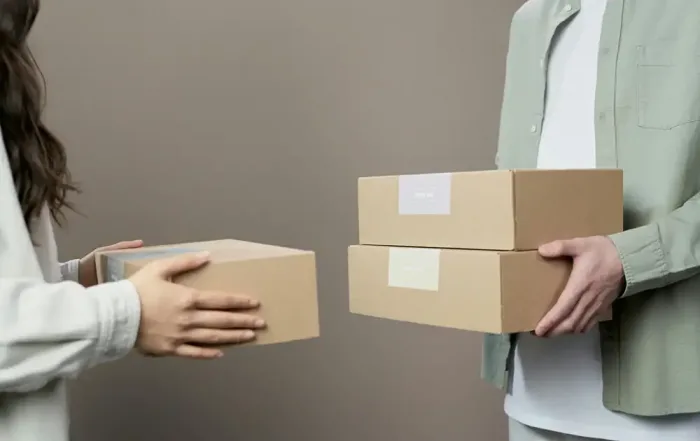Sustainable Printing
Exposing Myths and Protecting the Environment
Introduction
We are now living in an era of heightened awareness regarding the protection of our planet and its finite resources. There is a scientific consensus informing us of the dangers of manmade global warming and climate change. Statistics reveal that a third of consumers now choose products that they believe are responsibly sourced and manufactured. In effect, choosing social and environmental good and rejecting those perceived to be doing harm. Therefore, let us discuss sustainable printing.
Sustainability in the environment
Renewable energy and the reduction of CO2 gases are among the more salient issues. Most people are probably unaware that displaying a page on a screen for over three minutes consumes more energy than producing a printed version of that page. They are probably also unaware that there have been successful developments of sustainability in the forest industry. These have facilitated an earth-friendly model for sourcing paper, in order to supply the needs of the print industry. Years of research and development have resulted in the creation of a new paper tree that produces the highest quality pulp. More importantly, this tree matures very quickly, within three to five years.
These Eucalyptus trees are perfect for the tropical climate of Thailand, where they are now being grown. Furthermore, they have short roots meaning that harvesting has little impact on the wider economy, such as rice paddies. There are few leaves so therefore sunlight is not disrupted and they also grow naturally, consuming very little water. In order to maximise use of wood debris, tree bark and any other waste material, these are all condensed and used as fuel which generates biomass power, providing electricity for the local community.
European Forests are actually thriving!
It is this kind of progressive innovation that has led to a quite remarkable benefit for the environment a little closer to home. There is a general perception that the forests of Europe are shrinking, as demand for consumable products rises with increased economic growth and an expanding human population. However, this is a misconception, in reality the opposite is true. I
n the past ten years European forests have ‘grown’ by more than 44,000sq km. More awareness raised would certainly educate a sceptical public. For example, far from being an irresponsible industry, only concerned by bottom line profit, the ‘Print Industry’ is in fact a very responsible player in the market, caring for and protecting the environment. This evidence does indeed suggest that the production and use of paper is very much sustainable and consumers should not be under the false illusion that using printed products to promote or advertise any business or service is detrimental to the environment.
Eco Friendly Printing
As well as responsibly sourcing the raw materials used for producing new paper (which is obviously trees) another aspect of the industry which leads to favourable analysis regarding the sustainability question, is the issue of recycling. Contrary to surveys which reveal that 80% of consumers believe that the recycling rate for paper is no more than 60%, reality is very different. Paper is a product that can be recycled many times. Indeed, recycling rates for paper are at over 72%. This is close to the maximum practical recycling rate, which is generally accepted to be at 78%. Impressive figures which the print industry can be justifiably proud.
It is noticeable that businesses in this day and age are attempting to coerce customers into switching to ‘digital’ options when receiving communications or receipts. I am sure that anyone reading this blog will have experienced being offered the ‘choice’ of receiving an email or text, rather than a letter or other form of printed correspondence. In fact, evidence suggests that the vast majority of consumers still prefer correspondence in printed form. Knowing that this is not an environmentally damaging option will only reinforce this already popular choice.
Is Technology really better for the environment than traditional methods?
Furthermore, major companies have recently been challenged regarding the misleading strategy implemented as a tactic to persuade their customers to ‘go paperless’ and ‘save trees’. As this blog has demonstrated this is a very dubious claim. In the US 20 major companies were recently persuaded to remove claims that e-billing is more environmentally friendly than paper. This is due partly because of the innovations already discussed in this article. It is also worth noting that the manufacturing of electronic devices uses Rare Earth Elements (R.E.E.’s). One example is Cobalt, often mined in conflict zones in Africa, where human rights abuses and damage to the natural environment is widespread. There is the also the problem of e-waste, with many millions of tonnes continuously growing as a result of discarded electronics.
Summary
Finally, it should be noted that the prime motivation for persuading consumers to ‘go paperless’ may have much less to do with environmental concerns and rather more to do with saving money and increasing profit. Ask yourself, should I really have to pay extra just to receive information on printed paper? Remember the choice is yours.
Simon Jones
08/01/2020
Other resources:
Have a look at our Carbon Balanced Printing page.
Subscribe for latest news, offers and events Doveton Press Printers, Bristol.
[mc4wp_form id=”1401″]














Leave A Comment